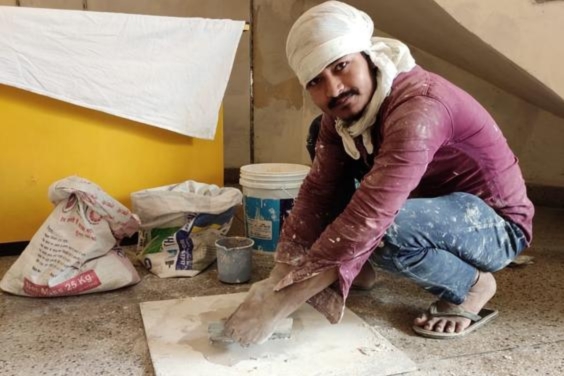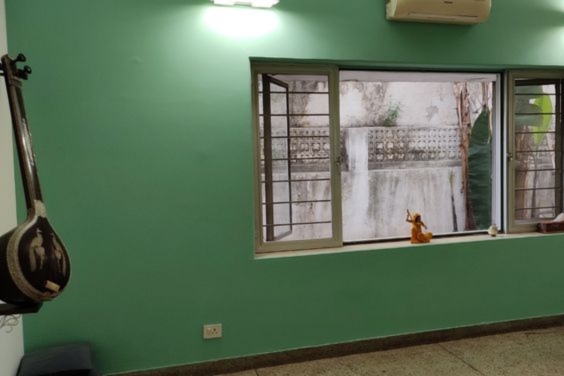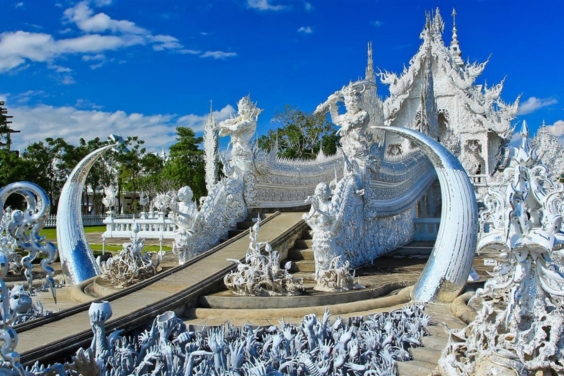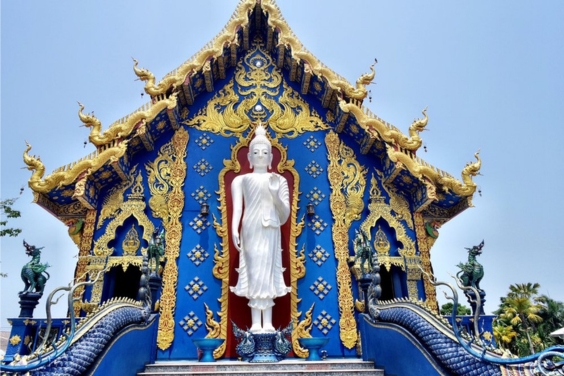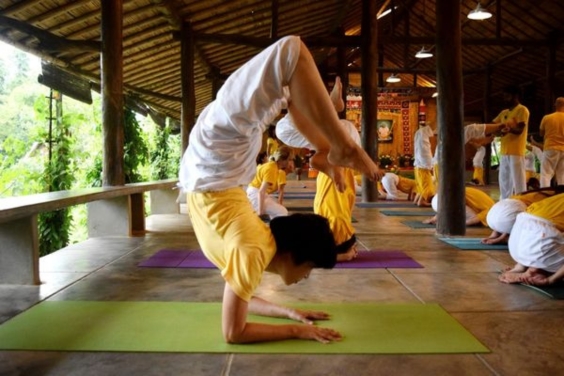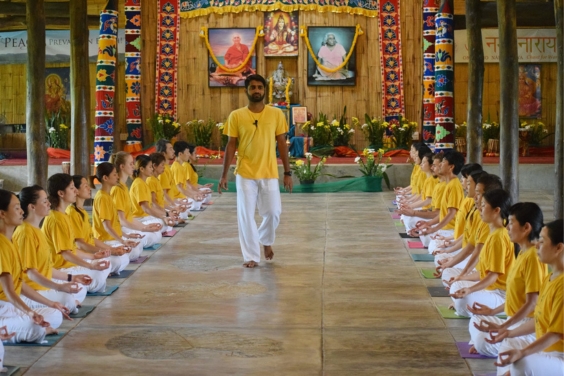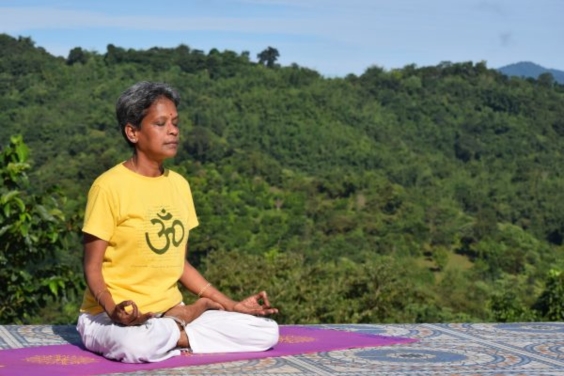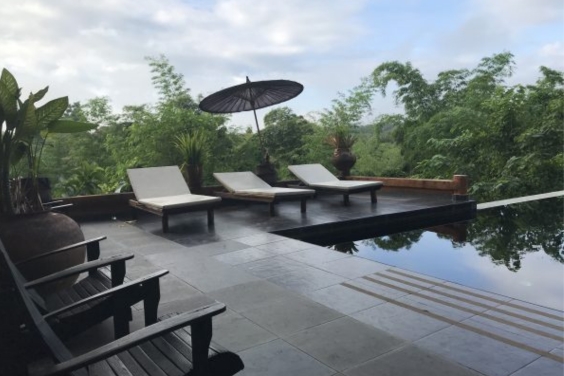
April 2023 | Change
Om Namah Sivaya
Blessed Self,
One of the greatest strengths of Swami Vishnudevanandaji was that he saw positivity, even under the most trying of conditions. He always taught us how to stand up and move forward in life.
The importance of this teaching is now more evident than ever before. The world has undergone a once in a lifetime pandemic that stalled all our activities and offered a completely different meaning and perspective on life to many. As we emerge from the pandemic we are faced with worldwide recessions and inflation. These are difficult times, for certain, but what inspires all the sadhakas here in India is the number of guests and students coming to our ashrams and centres. When times are tough, one place people take refuge in is the ancient teachings of Yoga and Meditation. All four of our ashrams have a good number of seekers visiting for Yoga Vacation, Teachers’ Training Courses, Ayurvedic Massage and Wellness courses, regular Panchakarma and Special weeklong Vedanta and Scriptural teachings. Our city centres are also receiving many students and now are at 60 to 70% pre-pandemic capacity. All of this encourages the staff to do their sadhana and service with more enthusiasm.
The Sivananda Free Rural Medical Hospital in Madurai is in its finishing stages, and once we receive the second large donation from our Donor, we will begin operations. The facility will serve 40 villages surrounding the Madurai ashram, and will provide free medical services, specialised care, and medicines for an estimated 2000 patients each week. We are eternally grateful to Mr. Mazur and family from Toronto for this noble donation.
Another great addition to Swamiji’s mission is a new Teachers Training Program conducted for the first time in beautiful Himachal from April 16, while our high season in Netala Ashram begins in the first week of April. This year we are introducing Swamiji’s vision of conducting Yoga Vacation also in the Netala Ashram, which will run simultaneously with the Teachers’ Training courses from May until October, enabling students and seekers to visit that ashram for shorter visits.
All of this expansion and imparting of the teachings in their purity is possible only through your continued support, and for that we are most grateful. May Master and Swamiji’s blessings be with us always.
Pranams to all,
Sivananda Yoga Vedanta Ashrams & Centres, India
Change is necessary, and a certainty in life that we will face. We all need to change, but we generally resist it. If we are not ready to change, our yoga practice nudges us gently towards it and helps to prepare us for it. Yoga practice also reveals our faults and areas where change is needed. It’s not easy to recognise our faults, certainly, however, the powerful words of our gurus help to remind us that we can change, one emotion, one moment, one habit at a time.
This month read Swami Sivananda’s inspiring words about changing habits, understand the Sivananda sequence of asanas a little better, and learn about conscious eating. We hope you enjoy the newsletter. As usual, please feel free to reach out to us with your thoughts and feedback: [email protected]
News Item:
Renovations to Nataraja Centre in South Delhi
Due to a generous donation from Mr. Samir Arora, a member of our community in South Delhi, we have been able to undertake much needed renovations to our centre in Kailash Colony. We have painted the entire centre with new colours, repaired damage to walls, installed several new windows, revitalised staff rooms, created a new outdoor seating area, and removed unneeded items from the inside and outside gardens of the centre. The building feels very fresh, sattvic, and conducive to practice. A large team of carpenters, alongside a dedicated team of karma yogis have worked for several weeks now to clean and prepare the centre for classes. We look forward to completing the finishing touches and are most grateful for the generosity and support of Mr. Samir Arora. Please join us for class in Kailash Colony to enjoy our revitalised centre!
Photo Update:
Programmes in Chiang Rai, Thailand
We are busy planning our upcoming programmes for Thailand this fall. Join us this fall at the charming Phu Chaisai Mountain Resort in Chiang Rai, Thailand for the following yoga programmes:
- Sadhana Intensive, September 16 to 30, 2023
- Teachers’ Training Course, October 1 to 28, 2023
- Advanced Teachers’ Training Course, October 1 to 28, 2023
- Yoga Vacation, October 7 to 11 and October 21 to 25, 2023
The weather in October is excellent and these programmes provide an excellent opportunity to visit Thailand, to deepen your understanding of yoga, and to explore some of the local temples and culture as well. We hope you’ll join us this fall!
For more information visit: sivanandathailand.org
Upcoming Courses:
Learn, Practise & Grow with Us!
Teachers’ Training Course (TTC)
Apr 9 to May 6, Netala, Himalayas
May 14 to June 10, Netala, Himalayas
May 28 to June 24, Madurai, Tamil Nadu
For more details, click here
First ever Teachers’ Training Course (TTC) in Baddi, Himachal Pradesh
Apr 16 to May 13, 2023
For more details, click here
Sivananda Teachers’ Immersion Course (STIC)
May 12, 2023 to May 11, 2024
For more details, click here
Retreats
Introduction to Vedanta Retreat
Apr 17 to 23, Neyyar Dam, Kerala
For more details, click here
Teachings Excerpt: Change the Habits by Swami Sivananda
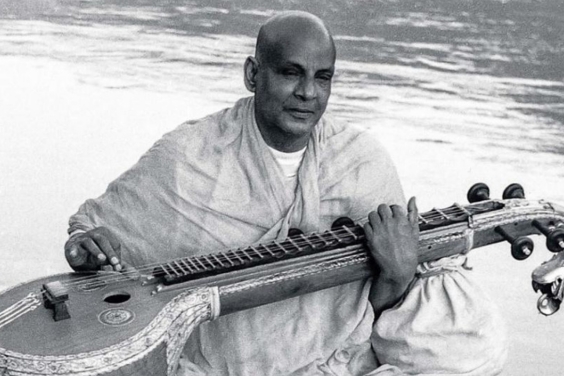
Mind is a bundle of habits. Bad habits and prejudices, hidden in one’s nature, will be brought to the surface of the mind when the opportunity comes. If you change the habits you can also change your character. You sow a habit and reap a character. You sow a character and reap a destiny.
Habits originate in the conscious mind but when they become established, by constant repetition, they sink into the unconscious mind and become our ‘second nature’. Habit can however be changed by a new, healthy, agreeable habit, of a stronger nature. At present you are thinking, “I am the body”. Think, “I am Brahman”. In the course of time you will be established in Brahmic consciousness.
Do not be a slave to one idea. Whenever you get new, healthy ideas, the old ones must be given up. In the mind there is an internal fight ever going on between ‘nature’ and ‘will’, between the old, worldly habits and the new, spiritual habits.
In the case of aspirants, the fight is between the old samskaras of the sensual world and new, spiritual samskaras. It is a fight between the good impressions of the past and bad impressions of the past. It is a fight between viveka (wisdom) and instinctive mind and indriyas (senses).
Eventually will, which is pure, strong and irresistible, is bound to succeed. There is no doubt about this. As your reason grows and you become wiser and wiser – by study, by contact with the wise and by meditation – your mind must be well prepared to take up new, healthy, rational ideas and eschew the old, morbid ones.
Mind is your tool. When emotions arise, separate them, study them, analyse them – but do not identify yourself with them. Master your impulses, emotions and moods. Rise from the position of slave to that of a spiritual king.
Just as the repetition of a thought or action leads to perfection, so also does the recurrence of the same process, or the same idea, lead to the perfection of abstraction, concentration and meditation.
Give your full mind to God. Only then will you have realisation. Even if one ray of the mind runs outside, it is impossible to attain God-consciousness. You cannot enjoy peace of mind, you cannot practise meditation, if there is tossing of the mind. Destroy mundane desires through dispassion and surrender to the Lord.
Research/Links
- In the ancient Indian scriptures, OM was considered to be the most powerful mantra. Today, science is catching up with the powerful effects of OM chanting on the autonomic nervous system for reducing anxiety and inducing deeper states of relaxation. Check out the research here:
www.ncbi.nlm.nih.gov/pmc/articles/PMC9015091/
Spiritual Calendar
April 1 – Ekadasi
April 6 – Full Moon
April 15 – Vishu (Malayalam New Year)
April 16 – Ekadasi
April 20 – New Moon
Change: Understanding the Sivananda Sequence
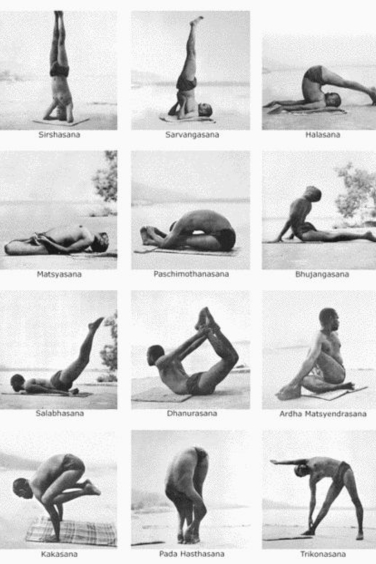
At our recent TTC Refresher Course here in India we had a session on understanding the Sivananda sequence. The following is a brief synopsis of that discussion.
Have you wondered why the 12 basic asanas in the Sivananda sequence are practiced in the order they are? There is a lot of deep and subtle meaning to the order. It represents a cycle and a transformation that we have all, knowingly or unknowingly, undergone. We start upside-down with the headstand and end on our feet in the most stable geometric shape, the triangle.
To understand the sequence, consider in which position we spend most of our waking lives. Generally, we are standing or sitting, with our head at the top. In an evolutionary sense, there is a good reason for this. We can exercise some control over our environment; we can see into the distance and observe an enemy or threat approaching with enough time to do something about it! We have the ability to use our arms to do things and use our legs to move and to go anyplace we wish.
When we stand on our head, we are relinquishing that control over our environment, so we must feel safe to do this! The headstand is therefore deeply introspective, a withdrawal from the world and from our usual ways of interacting with it. We begin the sequence from this detached point of view. As we move through the asanas we are focusing through the chakras, through the levels of consciousness, through the elements, from the most subtle to the most gross. We complete the sequence standing firmly on our feet in a triangle shape, the most stable geometric shape, which suggests stability, being grounded in the world in the usual way in which we inhabit it.
Why would Swami Vishnudevananda emphasize starting with the headstand and finishing by standing firmly on the feet? Always practical, Swamiji likely wanted us to do the deep work, to practice detachment, but to finish the practice with stability, grounded and able to act in the world more peacefully and skilfully. To experience the wisdom of this, you can try an experiment: practice the headstand for 5 to 10 minutes and then to get up and go immediately into the office!
When we practice the asanas in order from the headstand through to the triangle, we are moving through the elements from the subtle to the gross, from consciousness and thought, ether and air through to fire, water, and finally earth. This can be seen as a process of creation, moving from the subtle through to the gross and fully physically manifest. By contrast when we complete our practice with final relaxation, we focus through the body from bottom to top, moving through the elements from the gross to the subtle. This can be seen as a process of dissolution. This represents our cycle in life, our transformation from creation and manifestation of our physical body through to death and dissolution of the body and eventual rebirth. We go through a cycle and along the way many changes. The practice reminds us of this each day.
Teaching & Practice Tips:
Adaptations for Leg Raises Part 2
In this video we show some additional variations to the single and double leg raises which help to strengthen the abdomen after abdominal surgery, childbirth, diastasis recti, or hernia. The adaptations shown here are generally less intense and may help anyone with the above conditions, however, it is important to check with your doctor before beginning any abdominal strengthening exercises. Part 1 can be watched here:
sandesha.sivanandayoga.org/yoga-sandesha-dec-2022/
Temple Showcase: Akshardham Temple, Delhi
Akshardham temple is located in Delhi on the banks of the Yamuna river, not too far from our centre in South Delhi. It’s construction and layout is designed on the lines of Vastu and Pancharatra Shastra, the traditional Hindu understanding of geometric patterns of architecture. The temple has been awarded with Guinness World record for being world’s largest comprehensive Hindu temple. A modern temple experience that is not to be missed!
True to its meaning as the divine abode of God, Swaminarayan Akshardham temple is the eternal space for experiencing devotion, purity, and peace. The culmination of spiritual and cultural faculties makes Akshardham temple not just a religious place for spiritual upliftment but also an abode dedicated to cultural learning. Adorned with ancient architecture and timeless Hindu spiritual messages, the cultural traditions seem to come alive at the temple campus.
Inaugurated on November 6, 2005, Akshardham temple is a Swaminarayan temple with an architecture comprising images of the avatars, devas and great sages of Hinduism. The spiritual temple campus showcases about 10,000 years of Indian culture in breath taking grandeur. The temple symbolically takes you through the timeless journey of Indian art and the evolution of mankind, which makes this temple unique in its values. The architecture of the temple is in sync with ancient Vedic text known as the Sthapatya Shastra.
Here are some interesting facts about the temple architecture:
- Akshardham temple is entirely carved from the Rajasthani pink sandstone and Italian Carrara marble.
- The temple stands at a height of 141.3 feet and is spread out at a width of 316 feet.
- The temple stands on 234 beautifully carved pillars.
- The temple houses about 20,000 idols of Hindu deities.
- The Swaminarayan statue is 11 feet long and each statue at Akshardham has been constructed with panch dhatu, a combination of five elements.
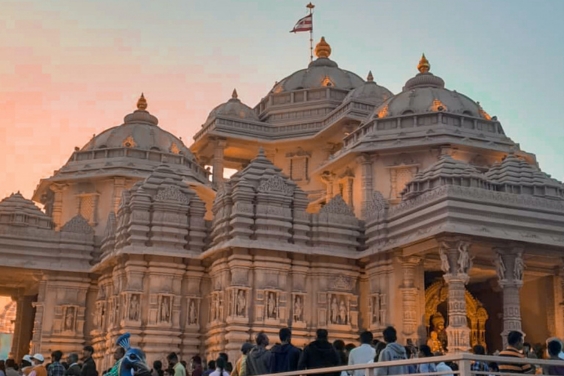
For a stunning aerial view of the temple, watch the following video:
Other Attractions include:
- Temple Complex – Surrounded with landscaped lawns, fountains, gardens, exhibition halls, pavilions, and walkways, the temple ambience exudes an environment of total serenity.
- Exhibition Halls – Exhibition halls display a rich and diverse Hindu culture. The 3D visual, sound and musical effects with narrated dialogues have been used to dramatically narrate various incidents from the life of Swaminarayan.
- Sanskruti Vihar – One of the most exciting aspects of the temple is the boat ride that takes you through the Vedic period of India. Robotics and animatronic figures showcase ancient Indian civilization from 10,000 years ago, the world’s first university, Vedic marketplace, Yoga practices, the ancient set up of a classroom at Takshashila, and much more.
- Musical Fountain – This musical fountain dances to the episodes from Upanishads and Vedas in multi-colored laser lights, water jets, underwater flames, surround sound, and video projections.
- Garden of India – A landscaped garden, the Bharat Upwan houses bronze statues of eminent Indian personalities.
Narayan Sarovar – The pool that circles the main Akshardham Temple contains water from 151 lakes, rivers, and stepwells from across India.
Nutritional Tips:
Conscious Eating
In the ancient view, food has a physical, mental, emotional, and spiritual impact. The term ‘conscious eating’ associates with this holistic aspect of diet and is a higher concept than simply ‘healthy eating’. The idea of conscious eating has been much propogated by the ancient traditions of Yoga and Ayurveda, and the aspect of healthy eating is inherently a part of conscious eating. So, what does conscious eating actually mean?
Conscious eating considers all layers of our being and is based on the ideology that whatever we eat has a deep impact not only on the body functioning, but on how we think, behave and operate on a day to day level.

Foods that impart low vibrations may impact the otherwise sattvic state of the mind and make our behaviour rajasic (overactive and overwhelming) or tamasic (dull or in a state of inertia), even though their nutritional value may be high. For example, consuming a large quantity of animal food may provide us with concentrated proteins but can also impart the fearful, frightening or aggressive energy of the basic nature of the animal meat consumed. Thus, in the Yogic and Ayurvedic sciences, it is highly recommened to make conscious food choices to keep the mind pure and in a state of sattva.
Here are a few tips for incorporating conscious eating with your Yogic practice:
- It all begins with a commitment to self and dedication to stay on track with high-vibrational food choices.
- Introducing more fruits, vegetables and sprouts in the diet and slowly minimizing animal food consumption.
- Making each meal nutrient dense with inclusion the of wholefoods such as wholegrains, proteins from beans and lentils, fruits, vegetables, nuts and seeds.
- To eat healthier, start by making small changes. Make each meal or snack contain nutrient-dense foods, and try to avoid processed foods.
- Consuming organic & non-GMO foods as much as possible.
- Minimizing the consumption of bottled water that comes with heavy toxic chemicals such as fluoride, chlorine, BPA, and heavy metals. Consuming mineralized spring water frequently.
- Cleansing & detoxing regularly
- Keeping the body pH alkaline by consuming mineral-rich foods. These include sea salt, sea vegetables, lemon water, and cultured foods.
- Cutting down sugar consumption as sugar is highly acidic for the body. The brain survives on ‘good sugars’ that come from wholegrains and vegetables versus refined sources of sugars.
- Feeding the gut bacteria with probiotic-rich foods or through probiotic supplementation.
- Consuming ample amounts of green leafy vegetables to rid the body of sickness, imbalances, weight concerns, and acidic load, and to feel more alive in the body and mind.
From the Community:
The following recent blog post by a member of the community features our ashrams and centres around the world and the impact of Swami Sivananda and Swami Vishnudevananda’s teaching: cultureandheritage.org/2022/10/international-sivananda-yoga-vedanta.html
“Change is always subjective. All through evolution you find that the conquest of nature comes by change in the subject. Apply this to religion and morality, and you will find that the conquest of evil comes by the change in the subjective alone. That is how the Advaitic system gets its whole force, on the subjective side of man.”
-Swami Sivananda


